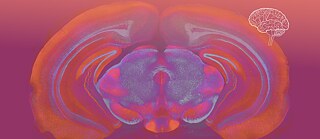
The journey of Homo sapiens
The origins of humans are in Africa. Homo erectus was spreading from there into Europe and Asia more than 1.5 million years ago.
Homo sapiens – also referred to as “modern humans” – came from these ancestor, but so did other, older species of human like the Neanderthal and Denisova hominins.
The development of Homo sapiens began around 300,000 years ago in Africa. The characteristics that define “modern humans” emerged independently of each other in different regions of the continent. It was only over the course of several thousand years that they came together. Homo sapiens came out of Africa in several waves to settle in other regions of the world. On the way they encountered the older human species. But modern humans prevailed, probably because of their curiosity and adaptability. This means that all humans living in the world today
are of the species Homo sapiens – regardless of how different they look.
Walking upright
Homo erectus means “upright human”. The upright gait emerged at several points in different locations. This method of locomotion had a significant evolutionary advantage in the savannah. Running was more important than climbing here. And with their head above grass level they could spot predators more easily. Homo erectus and later Homo sapiens were good long-distance runners – which proved very useful for hunting. They were no longer covered in thick hair, to prevent overheating when they were running. As successful hunters, early people ate a lot of animal protein and fat. This allowed the cerebrum to develop, which requires a large amount of energy.
The development of Homo sapiens began around 300,000 years ago in Africa. The characteristics that define “modern humans” emerged independently of each other in different regions of the continent. It was only over the course of several thousand years that they came together. Homo sapiens came out of Africa in several waves to settle in other regions of the world. On the way they encountered the older human species. But modern humans prevailed, probably because of their curiosity and adaptability. This means that all humans living in the world today
are of the species Homo sapiens – regardless of how different they look.
Walking upright
Homo erectus means “upright human”. The upright gait emerged at several points in different locations. This method of locomotion had a significant evolutionary advantage in the savannah. Running was more important than climbing here. And with their head above grass level they could spot predators more easily. Homo erectus and later Homo sapiens were good long-distance runners – which proved very useful for hunting. They were no longer covered in thick hair, to prevent overheating when they were running. As successful hunters, early people ate a lot of animal protein and fat. This allowed the cerebrum to develop, which requires a large amount of energy.
Cooperation partners

|

|
You might find this also interesting



